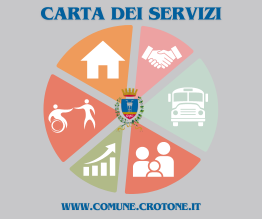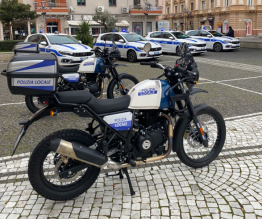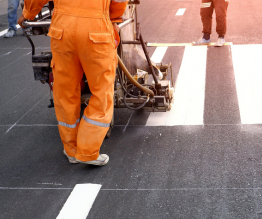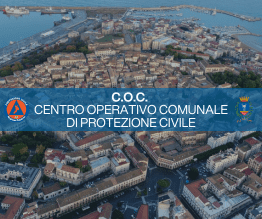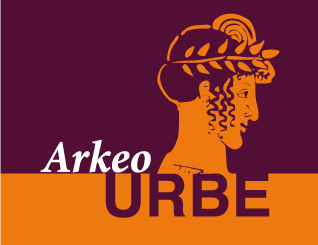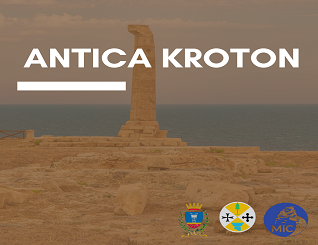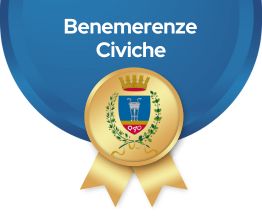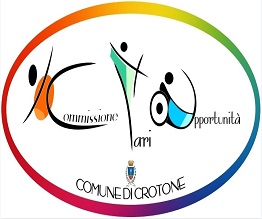Archaeology and Cultural Heritage

- National Archaeological Museum
Knowing Crotone doesn't mean only admire its natural and cultural heritage, but it means to discover the precious collections enclosed in its museums:
National Archaeological Museum: founded in 1968, is located on Risorgimento street, in the heart of the historic city center. The building consists of two floors and contains all of the most significant finds from the archaeological sites of the entire territory Crotone. In particular rich archaeological finds come from the Sanctuary of Hera Lacinia site in Capocolonna.
On the ground floor, the prehistoric age offers axes and lithicweapons, as well as tools for agriculture. Well documented is the Iron Age withrich grave goods and artifacts from the area of Crotone and Greek vase production, with vases and amphorae of rare workmanship and beauty distinguished according to origin: Corinth, Chalcis, Attic and Italiot. On the first floor, of great interest is the large section devoted to the so-called "treasure of Hera Lacinia", a votive room with objects of high artistic value, found in the Archaeological Park of Column Cape. This rich heritage, dating from the XVI and IV centuries, including masterpieces such as the wingedsphinx, the gorgon, the nuragic boat. Among these is the beautiful Golden Tiara, also known as "crown of Hera", consisting of a strip of gold foil that develops a decorative braid inside while outside there is a line withleaves and berries incurred by wires intertwined. In the lower part are placed some leaves, maybe maple or vine. There are no known currently similar jewelsin the same state of preservation such as to understand the origin of the crownand its destination, although some scholars speculate that it was the culmination of a statue of the goddess Hera Lacinia.
The original nucleus of the museum was made up of material from unofficial excavations and the antique market. As a result, the collections were increased by the city-sites.
Other sections documenting the shrines in the area: that of Apollo Aleo to Krimisa (Alice Point in Cirò Marina), the Doric temple of worship Kaulonia and an area of Stilo Point.
In 2007, the museum heritage has been enriched by another find very valuable, coming from one clandestine excavation of Strongoli and finished in 1992 at the Paul Getty Museum in Malibu, California. It is a askos, an container of oils made of bronze of the V century, depicting a mermaid with bird body and head of a woman.
Another section of the museum is dedicated to the discoveries of the ancient Krimisa, the modern Cirò Marina, and Greek sanctuaries of the citizens of Vigna Nuova.
- Capo Colonna's site
Archaeological Museum of Capo Colonna: opened in 2002, is located within the same park, on a single floor. The structure is divided into three exhibition halls: the earth, which preserves artifacts that emerged during the period of Roman rule, the holy, the sacred area dedicated to testimonies of Santaurio and the sea, which exposes the underwater findings. For a better understanding the history of the area, the exposure is also enriched with panels, movies, multimedia, reproductions and other teaching equipment. Among the most valuable display in the Museum a bronze Corinthian helmet in the fifth century, a stumpstill in the stone on which is inscribed with a dedication to Phayllos, among the most famous Crotonian athletes, Zeus Meilichios (sweet honey, benevolent) and a small marble sculpture depicting Cupid and Psyche, found in the watersoff the coast of Crotone. The property is also surrounded by garden of Hera,made, between the atria, pear trees, apple, lily, myrtle and pomegranate.

- Civic Museum
Civic Museum: institute in 1982, had its headquarters in the Tower of the Castle-Helper Fortress Crotone. In 1996 it was transferred permanently on the premises of Sottocampana barracks and Command Tower of the Castle, the latter used onlyfor temporary exhibitions. The exhibition halls are three.
The first room has above all tile floors and ceramic fragments of pottery of southern invoice, unearthed during excavations carried out in the historic city center in the district and Crotone. In addition there is the exposure of a considerable number of pipettes of clay found at the Castle and two decorative elements of a portal, from an old farmhouse located between Cutro and Papanice dating back to the XIV century.
The second room exposes, in the showcases, the numismatic evidence, which stands out a bulla, a small round object that contains, in general, an amulet that could be worn as a pendant ona necklace. There are also hunting daggers, and some swords, locally made, dating from the XVIII and XIX century. Well documented is the pottery from three Calabrian locations: Gerace, Seminara and Squillace. It includes everyday objects (cannate, lanceddre, salting, limme, capase). In particular, the ceramic of Seminara is characterized by the richness of colorand plasticity, for the function of its superstitious figurations.
The third room contains a gunthree culverins, found in the waters in front of the coast of Crotone. Along the walls, mostly to the ground, are arranged the arms of some noble Crotonian families, including that of the Ruffo family.

- Mack (Museum of Contemporary Art Krotone)
Mack (Museum of Contemporary Art Krotone): located in Castle Square, within Barracco palace, exhibits works that trace the history of Italian art from Second World War to today. Among the most important Italian artists Mimmo Rotella with his collageof the '60s, Bruno Ceccobelli, Federico Pietrella, Mario Merz and Vector Pisani. It also exhibits works by international artists as Vanessa Beecroft and Jannis Kounellis.
